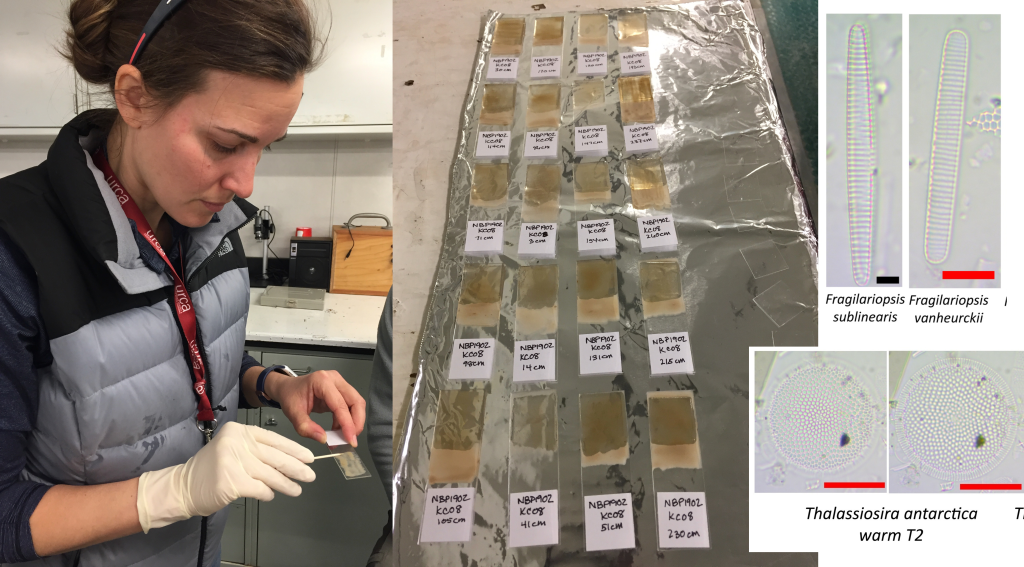(formerly R. Totten Minzoni)
Associate Professor
The University of Alabama
Department of Geological Sciences
Center for Sedimentary Basin Studies
Education
PhD, Earth Sci., Rice University, 2015
BS, Geology, Univ. of Kansas, 2009
Univ. of New Orleans, 2004-2005
About
As a native of New Orleans, I developed a practical awareness of extreme weather and sea level early on. Not surprisingly, my research is driven by the impacts of historic climate change; I strive to better understand recent observations within a long-term, geologic context to better inform discussions and predictions of global climate change.
I specialize in paleoclimatology, using tools from sedimentology, stratigraphy, micropaleontology, and geochemistry to reconstruct past climate, glacial, and ocean mass changes. My field areas are based in Antarctica and the Gulf of Mexico. Understanding past controls on glacial stability can help us better predict glacial responses to ongoing climate and oceanographic changes. Ultimately, these glacial changes can be related to sea level and responses of coastal environments regionally and globally.
I joined the Crimson Tide in 2016 and began applying sediment-based techniques to our backyard here in Alabama and the Gulf Coast. I am currently researching flooding and environmental history in Mobile, Weeks, and Galveston bays, and specifically how climate and land use changes affected these coastal environments. Grain size distribution, diatom microfossil records, and geochemical signatures of sediment cores collected from bays that drain major metropolitan areas are used to identify and compare post-industrial vs. natural Holocene environmental history.
Before joining UA, I worked at Shell Exploration and Production Co. in the deepwater Gulf of Mexico evaluating prospects in the Norphlet and Wilcox plays. Now that I have relocated to the heartland of Norphlet play, I am currently pursuing research on core and log datasets from the Alabama region with the aim to integrate core lithofacies with petrofacies to better predict paleoenvironments and reservoir quality at the regional scale.
I received my B.S. in Geology and Geophysics from the University of Kansas in 2009, with a Goldwater Award for my senior thesis work on the geochemistry of mosasaurs, swimming lizards of the Cretaceous seas. Eager to explore icehouse climates, I then went on to earn my PhD from Rice University (2015) on Antarctica’s glacial response to the last 14,000 years of climate change. Key to understanding and predicting ongoing changes in the glacial landscape is awareness of forcings on glacial behavior. I tackled this problem by interrogating marine seismic, sediment cores, and fossil plankton assemblages to reconstruct glacier and ocean changes at the sub-centennial scale in over a dozen fjords.
Here’s a little bit more about how I went from living below sea level to studying sea level: https://www.pageturnpro.com/Progress-Printing/106977-Alabama-Alumni-Winter-22/sdefault.html (UA Alumni Magazine Winter Issue 2022)

